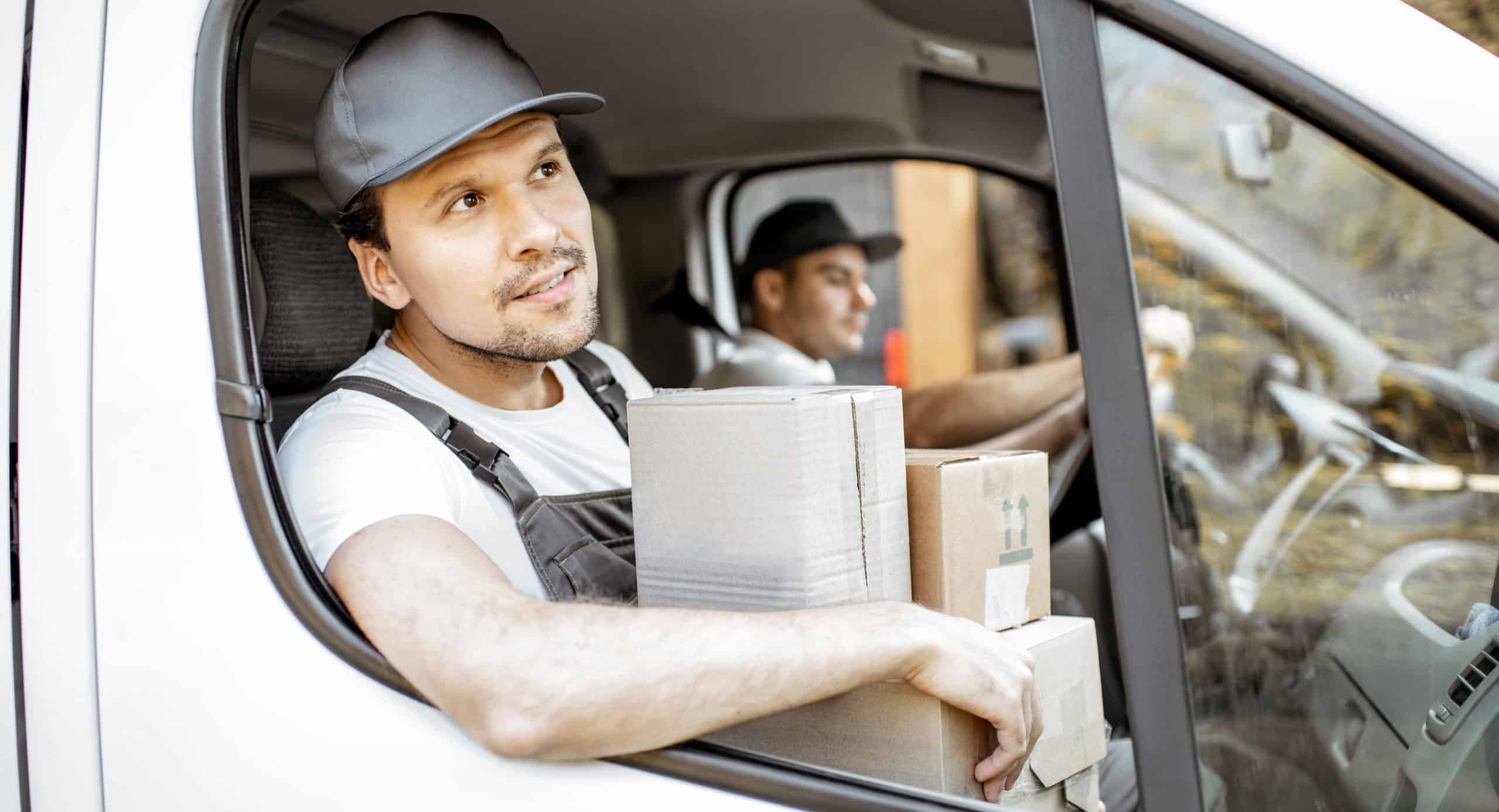The Growing Cost of Missed Deliveries: Why Route Accuracy Has Never Mattered More

The Growing Cost of Missed Deliveries Why Route Accuracy Has Never Mattered More
In today’s landscape of real-time expectations, missed deliveries aren’t just an inconvenience – they’re a growing threat to profitability and reputation. With pressure mounting on logistics teams to deliver faster, more accurately, and more sustainably, route accuracy has gone from being a “nice to have” to a business-critical function.
While the eCommerce boom has brought immense opportunity, it’s also introduced enormous complexity. And for every parcel that goes astray or arrives late, there’s a knock-on effect – from operational costs to customer trust.
Why missed deliveries are rising – and costing more than ever
Delivery failures are nothing new. But recent data shows they’re more frequent, and more expensive, than many retailers realise.
According to Citizens Advice, over a third of online shoppers experienced a problem with a parcel delivery in the past year, with late or missed deliveries topping the list of complaints. But it’s not just consumer frustration at play.
Data from Metapack reveals that between September and December alone, retailers across the UK and Europe lost an estimated £464 million due to missing parcels. Of that:
– £435 million came from lost product revenue
– £9 million was attributed to wasted shipping costs
– £20.3 million was linked to WISMO (‘Where Is My Order?’) enquiries handled by customer service teams
Even though only 0.06% of parcels were officially declared as lost, that still equates to 3.72 million missing items in just four months. When potentially lost parcels (those with no tracking updates after five days) are included, the figure could be up to 0.7% of total shipments.
Add to that the average £125 cost per lost parcel, and it’s clear that every failed delivery carries significant financial weight.
And whilst not all delivery issues stem from poor routing, many can be prevented through improved first-time delivery accuracy and live ETA management.
Understanding the reasons behind failed deliveries
So, what’s fuelling the increase?
Online retail sales in the UK topped £120 billion in 2023 (Statista), creating unprecedented pressure on delivery infrastructure. High demand, coupled with limited driver availability and increasingly complex delivery environments, means margins for error are shrinking fast.
Key contributing factors include:
– Poor address data or missing delivery instructions
– Urban congestion and pedestrianisation zones
– Driver shortages, especially during seasonal peaks
– Last-minute order changes that disrupt route plans
– Theft, or “porch piracy”, is also a growing concern – £2.2 billion is lost annually in theft-related retail incidents in the UK, including parcel theft (British Retail Consortium). Whilst theft is a rising challenge, improving delivery timing and communication (e.g. timed drops, alerts) can help reduce the risk of unattended parcels.
When deliveries go wrong, it’s not just the initial cost of redelivery or reimbursement to consider. There’s a domino effect across departments – from customer service to warehouse operations – and ultimately, to customer churn.
Why route accuracy is a strategic priority
In an environment where just one missed delivery can cost significantly, efficient route planning isn’t simply about hitting KPIs, it’s about protecting your bottom line.
Accurate routing enables:
– More reliable ETAs
– Better route execution and fewer delays
– Enhanced driver efficiency and wellbeing
– Reduced fuel usage and carbon emissions
– Greater capacity to scale without increasing headcount
But more importantly, it supports first-time delivery success. When drivers have real-time, reliable data at their fingertips – traffic conditions, roadworks, customer availability – they’re more likely to complete deliveries without needing a second attempt.
It also reduces pressure on drivers themselves, who often operate under unrealistic timeframes. With better planning, delivery runs become more manageable, safer, and less prone to last-minute disruption.
The cost of poor delivery experiences
For customers, one bad delivery experience can have lasting consequences. In fact, a significant percentage of customers (39% in the UK) are unlikely to return to a retailer after a bad delivery experience, according to ZigZag Global
That’s a huge risk in a world where customer acquisition costs are rising and loyalty is increasingly hard-won.
Customers today expect:
– Live tracking
– Narrow, accurate delivery windows
– Proactive updates if anything changes
And they expect it consistently. Fail to provide this, and you’re not just missing a parcel – you’re losing a customer.
Smarter systems for smarter delivery
Fixing this problem doesn’t mean throwing more drivers at it. It means investing in smarter, more responsive systems that can anticipate disruption, adjust routes dynamically, and keep customers in the loop.
Leading retailers are now:
– Using analytics and AI to flag anomalies and reduce risk, like parcels going off-grid or diverging from expected transit paths.
– Improving data accuracy across order capture and last-mile logistics to ensure parcels are routed to the right place, first time.
These aren’t just tech upgrades, they’re strategic investments in long-term efficiency, customer satisfaction, and brand resilience.
Looking ahead
The message is clear: the cost of getting delivery wrong has never been higher. As volumes increase and customer patience shortens, businesses must find smarter ways to improve delivery outcomes – and fast.
Route accuracy is no longer optional. It’s a foundational requirement for meeting demand, protecting margins, and delivering the kind of experience that keeps customers coming back.
In short, it’s not just about delivering parcels. It’s about delivering on your promise.
If missed deliveries are costing your business more than just money, it’s time to act.
Speak to MaxOptra today to see how smarter route optimisation can reduce risk, improve accuracy, and deliver results your customers will notice.
👉 Get in touch with our team now to book a demo or chat through your challenges.
📦 Frequently Asked Questions: Route Optimisation & Missed Deliveries
How does route optimisation reduce missed deliveries?
Route optimisation improves delivery accuracy by calculating the most efficient and reliable routes for drivers. It factors in real-time traffic, road closures, and delivery time windows — helping ensure parcels arrive on time, first time. This reduces the risk of failed drops, redeliveries, and customer complaints.
Why are missed deliveries becoming more common in the UK?
Rising eCommerce demand, driver shortages, urban congestion, and poor delivery instructions have all contributed to a surge in missed deliveries. Without robust route optimisation, logistics teams struggle to keep up, leading to delays, increased costs, and unhappy customers.
What’s the financial impact of missed deliveries for retailers?
In just four months, UK and European retailers lost an estimated £464 million due to missing parcels. These losses include product value, shipping costs, and WISMO (“Where Is My Order?”) enquiries, showing how quickly missed deliveries can damage profit margins.
Is poor routing a major cause of delivery failures?
Yes. While not the only cause, inefficient routing is a key contributor to failed deliveries. Without accurate delivery ETAs or the ability to adjust in real time, drivers often miss slots or arrive when recipients aren’t available, increasing the likelihood of failed drops.
How does route optimisation improve first-time delivery success?
By giving drivers live updates, clear ETAs, and optimised drop sequences, route optimisation reduces delays and avoids second attempts. It also allows for better communication with customers, helping to ensure someone is available to receive the parcel.
What are the long-term risks of ignoring delivery accuracy?
Beyond operational costs, poor delivery experiences damage customer loyalty. Around 39% of UK consumers won’t return to a retailer after a single bad delivery. Route optimisation protects brand reputation by supporting consistent, reliable service.
Can route optimisation software help with last-minute order changes?
Yes. Advanced solutions like MaxOptra offer dynamic re-routing, allowing for on-the-fly updates when orders change or disruptions occur. This agility helps maintain delivery accuracy even under pressure.
What’s the difference between basic route planning and strategic route optimisation?
Basic planning involves static route creation, often based on postcode alone. Strategic route optimisation uses real-time data, AI, and customer-specific logic to adapt routes dynamically, enabling smarter, more resilient delivery operations.
How quickly can businesses see results from route optimisation?
Most businesses see noticeable improvements in delivery performance and cost-efficiency within weeks of implementation. With reduced missed deliveries, better driver productivity, and happier customers, the ROI builds quickly.
Maxoptra System
© MaxOptra, 2023. Privacy Policy and Cookies






